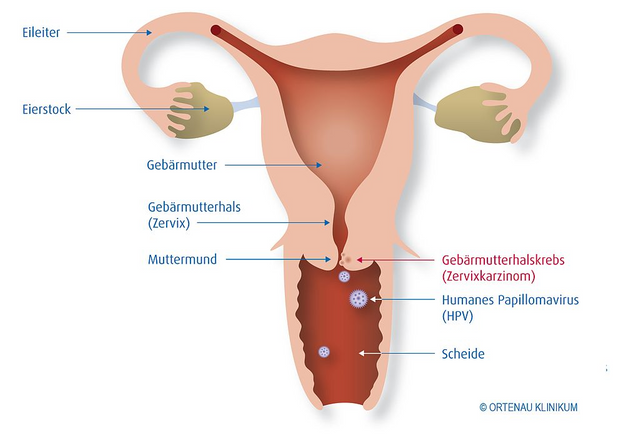Early Stages Of Cervical Cancer, Symptoms, Causes And Treatment

Cervical cancer is a cancer that appears in the cervix of women. The cervix itself serves as the entrance to the uterus from the vagina. All women of all ages are at risk for cervical cancer. But, this disease tends to affect women who are sexually active. in this article I will explain the symptoms, causes and how to treat early stage cervical cancer only.
In the early stages, cervical cancer usually has no known symptoms. The most common symptoms of cervical cancer are vaginal bleeding that occurs post-sex, outside of menstruation, or after menopause. Although there is bleeding, does not mean you suffer from this cervical cancer. To ascertain the cause of your condition, immediately ask your doctor. If cervical cancer is suspected, referral to a specialist will be given. [1]
Every woman is strongly recommended to know early on the symptoms of cervical cancer, considering this type of disease including the type of cancer with high frequency and kill. By knowing the symptoms early on, then you will give hope of better healing. it can even prevent it before it happens.
How Early Symptoms Early Cervical Cancer Symptoms:
- Abnormal bleeding. bleeding that occurs between menstrual periods, after sexual intercourse or post-menopausal bleeding.
- Unusual whiteness. Generally out fluid that is thin, pink or smelly. Pelvic pain.
- Pain during intercourse or at other times indicating that there are abnormal changes in the cervix, or this can also occur due to less serious conditions.
All the symptoms early if you experience it should be discussed immediately with the doctor. So doctors can perform further tests to confirm the cause, When it is certain that the cause is cervical cancer, then the doctor determines in which stage the development of the cancer. This is important to determine appropriate therapeutic therapy. Because each stage has its own way of therapy. [2]
Cervical cancer causes
Factors of occurrence Cervical cancer is caused by a virus that causes infection in the cervix. The virus can heal by itself if the patient has the immune system to fight this virus while for the virus that stare in the long term and mengganas caused by the immune of the patient less.
Cervical cancer is very easily transmitted through sexual contact. If a person is infected with a virus then touches the genital area then this virus will move and also infect the cervical region. In addition, transmission of HPV virus is from virus-contaminated WC closets, allowing patients infected with HPV to pass through the closet to the genital area.
The cause of cervical cancer next is on an unhealthy lifestyle such as smoking, consuming less vitamin C and vitamin E. deficiency of these two vitamins can also be a cause of long-lasting HPV in the body and cause cancer.The major risk of cervical cancer is intercourse, multiple partners having sex or having sex with men who change their partners, and may also be due to a family history of this type of cancer. [3]
Treatment is often done in the medical world
Treatment by Operation: At the precancerous stage, cells that later can turn into cancer will be discarded. This can be done using a fine wire and electric current (LLETZ). Other treatment options include surgical removal using laser therapy. After developing into early stage cancer, the tissue must be removed by surgery.
One type of surgery used for early-stage cervical cancer is trachelectomy (but the procedure is difficult and not always available), a surgical procedure that only lifts the cervical part only, but the uterus is left intact - meaning there is still a high probability for women to have children even though they have to be delivered by caesarean section. Hysterectomy is a more common method of treatment, ie both the cervix and the uterus will be removed.
This is the most commonly recommended procedure in case of stage 1 cervical cancer. For advanced cases may require rad*cal hysterectomy, this is an attempt to remove several other tissues around it and lymph nodes. If the cancer that has been treated recurs again, then a major surgery called pelvic exenteration will be needed. This not only lifts the female reproductive tract, but also the bladder, some of the intestines, and the rectum. [] [4]
Reference :
[1] (http://www.alodokter.com/kanker-serviks)
[2] [(https://mediskus.com/penyakit/gejala-awal-kanker-serviks-stadium-0-1-2-dan-3)
[3] (https://bidanku.com/kenali-gejala-awal-kanker-serviks)
[4] http://www.carakhasiatmanfaat.com/artikel/gejala-kanker-serviks-stadium-awal.html)